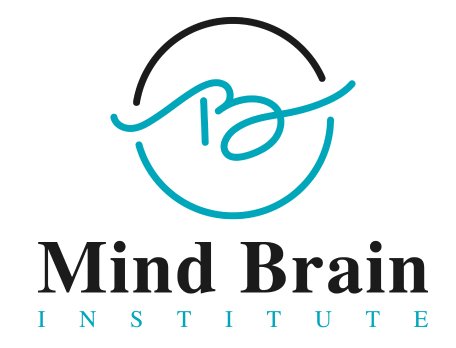
- Posted By Dr. Anuranjan Bist
- Comments 0
Depression and OCD are complex conditions, not just “chemical” or “emotional” but deeply interconnected. Many people respond partially to one form of treatment but don’t reach the level of relief they hoped for. This is where TMS with Psychotherapy offers a breakthrough. It bridges brain-level change with behaviour-level change, allowing patients to heal more completely and more sustainably.
The idea is simple: while TMS activates underperforming or overactive brain circuits, psychotherapy teaches the mind how to interpret, restructure, and respond to thoughts more effectively. When used together, the result is deeper healing. Today, more clinics globally are shifting toward combination therapy for depression, especially when single treatments aren’t enough. At Mind Brain Institute, this integrative model is becoming one of the most successful ways to help patients regain control, clarity, and stability.
What Is TMS and How Does It Help?
Transcranial Magnetic Stimulation (TMS) is a non-invasive, non-drug-based therapy that involves the use of magnetic pulses to stimulate specific areas of the brain that are involved in depression and OCD. It does not penetrate the bloodstream and has no systemic side effects as medication does.
The American Medical Association notes that standard TMS can enhance depression symptoms in approximately 50-60% of patients, and more than 30% of patients have gone into remission. In the case of OCD, it has been demonstrated that there is a significant improvement when certain regions, such as the supplementary motor area, are stimulated.
TMS sessions are brief, painless, and do not need any anesthesia. Over several weeks, these repeated stimulations help “reset” the brain’s communication pathways, the circuits responsible for mood regulation, intrusive thoughts, anxiety loops, and decision-making.
This improved brain connectivity becomes the perfect environment for therapy to work more efficiently, which is why more clinicians advocate for Psychotherapy with TMS as a combined approach.
How Does Psychotherapy Support Recovery?
Mental health recovery is based on psychotherapy, which involves its cognitive and emotional components. It prepares people with workable skills, coping mechanisms, and self-consciousness. In the case of depression, treatment methods like CBT could be useful to confront the negative thinking patterns and create healthier behavioural patterns. In the case of OCD, the ERP (Exposure and Response Prevention) can be used to discontinue the chain of obsessions and compulsions.
However, therapy requires active cognitive participation. On days when the brain feels foggy, slowed down, or overwhelmed, common symptoms of depression and OCD – therapy may not produce its full potential. This is why pairing Psychotherapy with TMS can create a new level of treatment effectiveness. TMS enhances the brain’s readiness, therapy enhances the mind’s ability to apply the change.
Why Do TMS with Psychotherapy Work Better Together?
The key is synergy. TMS Psychotherapy targets two levels of the same disorder, biological and behavioural. TMS enhances neuronal activity, emotional control, and clarity of thoughts. Psychotherapy imparts emotional processing, reframes thoughts, and develops healthy habits. The combination of the treatments not only makes the results appear sooner, but also prolongs the treatment process.
One of the most interesting findings was that patients undergoing TMS and psychotherapy stood a better chance of achieving long-term improvement over patients undergoing either of the two therapies. This is in line with the current tendency to implement combination therapy in treating depression, especially in situations where the patients are not witnessing any significant improvement with one therapy or medication.
Clinically, patients describe this combination as feeling “lighter,” “more emotionally available,” and “more able to apply what therapy teaches” after a few weeks of integrated treatment.
What Changes Happen in the Brain During TMS with Psychotherapy?
Neuroscience explains this synergy beautifully. TMS increases neuroplasticity, the brain’s ability to form new pathways and strengthen new learning. When TMS with Psychotherapy occurs in the same time window (same day or same week), therapy leverages this heightened neuroplastic state.
During this window:
- Cognitive flexibility improves
- Emotional regulation stabilises
- The brain becomes more receptive to new ideas and behavioural corrections
- The “learning” effect of therapy becomes stronger and more lasting
In the case of OCD, TMS is effective in the quieting of hyperactive circuits, which are responsible for bringing about the compulsions, and therapy teaches an individual to react in a different way towards intrusive thoughts. The intensity and frequency of OCD symptoms are better reduced with the assistance of this dual-layer wor
How Does Combination Therapy for Depression Improve Results?
Depression often impacts motivation, concentration, and emotional energy, all of which are needed for psychotherapy to work well. This issue is resolved at both extremes with the combination therapy for depression.
TMS elevates the average mood, re-engages the brain areas that are not functioning well, like the left dorsolateral prefrontal cortex, and enhances cognitive acuity. Once this activation begins, psychotherapy becomes more effective at addressing:
- Negative beliefs about self
- Loss of purpose or meaning
- Emotional shutdown
- Hopeless or ruminative thinking
- Interpersonal distress
Psychotherapy then reinforces the gains made by TMS by teaching healthier cognitive and emotional frameworks. Patients often report that sessions “make more sense,” feel more grounded, and allow them to make real progress.
This is why many modern clinics now recommend combination therapy for depression as a first-line option for individuals who do not want medication or who have had limited response in the past.
Why Is Psychotherapy with TMS Effective for OCD?
OCD is driven by neural overactivity combined with behavioural reinforcement. TMS assists in decreasing this overactivity, particularly in such regions as the SMA (Supplementary Motor Area). Compared to ERP-based psychotherapy, when the patient is coupled with the latter, they can better tolerate exposures and better resist compulsions.
Studies from the International OCD Foundation highlight that ERP success rates increase significantly when patients receive brain-based treatments alongside therapy. This makes Psychotherapy with TMS especially powerful for moderate to severe OCD.
The therapy helps retrain responses. TMS makes that retraining neurologically easier.
How Does Mind Brain Institute Plan TMS with Psychotherapy Treatment?
Mind Brain Institute treats each patient on a case-by-case basis. A psychiatrist checks the symptoms, past, and the degree and prescribes an organized regimen of TMS with Psychotherapy. A typical program includes:
- Daily TMS sessions
- Weekly or twice-weekly psychotherapy
- Progress reviews every 10–15 sessions
- A personalised neurocognitive roadmap
Hereby, patients can get the same coordinated care that integrates brain-level and behavioural-level change.

What Is TMS and How Does It Help?
Transcranial Magnetic Stimulation (TMS) is a non-invasive, non-drug-based therapy that involves the use of magnetic pulses to stimulate specific areas of the brain that are involved in depression and OCD. It does not penetrate the bloodstream and has no systemic side effects as medication does.
The American Medical Association notes that standard TMS can enhance depression symptoms in approximately 50-60% of patients, and more than 30% of patients have gone into remission. In the case of OCD, it has been demonstrated that there is a significant improvement when certain regions, such as the supplementary motor area, are stimulated.
TMS sessions are brief, painless, and do not need any anesthesia. Over several weeks, these repeated stimulations help “reset” the brain’s communication pathways, the circuits responsible for mood regulation, intrusive thoughts, anxiety loops, and decision-making.
This improved brain connectivity becomes the perfect environment for therapy to work more efficiently, which is why more clinicians advocate for Psychotherapy with TMS as a combined approach.
How Does Psychotherapy Support Recovery?
Mental health recovery is based on psychotherapy, which involves its cognitive and emotional components. It prepares people with workable skills, coping mechanisms, and self-consciousness. In the case of depression, treatment methods like CBT could be useful to confront the negative thinking patterns and create healthier behavioural patterns. In the case of OCD, the ERP (Exposure and Response Prevention) can be used to discontinue the chain of obsessions and compulsions.
However, therapy requires active cognitive participation. On days when the brain feels foggy, slowed down, or overwhelmed, common symptoms of depression and OCD – therapy may not produce its full potential. This is why pairing Psychotherapy with TMS can create a new level of treatment effectiveness. TMS enhances the brain’s readiness, therapy enhances the mind’s ability to apply the change.
Why Do TMS with Psychotherapy Work Better Together?
The key is synergy. TMS Psychotherapy targets two levels of the same disorder, biological and behavioural. TMS enhances neuronal activity, emotional control, and clarity of thoughts. Psychotherapy imparts emotional processing, reframes thoughts, and develops healthy habits. The combination of the treatments not only makes the results appear sooner, but also prolongs the treatment process.
One of the most interesting findings was that patients undergoing TMS and psychotherapy stood a better chance of achieving long-term improvement over patients undergoing either of the two therapies. This is in line with the current tendency to implement combination therapy in treating depression, especially in situations where the patients are not witnessing any significant improvement with one therapy or medication.
Clinically, patients describe this combination as feeling “lighter,” “more emotionally available,” and “more able to apply what therapy teaches” after a few weeks of integrated treatment.
What Changes Happen in the Brain During TMS with Psychotherapy?
Neuroscience explains this synergy beautifully. TMS increases neuroplasticity, the brain’s ability to form new pathways and strengthen new learning. When TMS with Psychotherapy occurs in the same time window (same day or same week), therapy leverages this heightened neuroplastic state.
During this window:
- Cognitive flexibility improves
- Emotional regulation stabilises
- The brain becomes more receptive to new ideas and behavioural corrections
- The “learning” effect of therapy becomes stronger and more lasting
In the case of OCD, TMS is effective in the quieting of hyperactive circuits, which are responsible for bringing about the compulsions, and therapy teaches an individual to react in a different way towards intrusive thoughts. The intensity and frequency of OCD symptoms are better reduced with the assistance of this dual-layer wor
How Does Combination Therapy for Depression Improve Results?
Depression often impacts motivation, concentration, and emotional energy, all of which are needed for psychotherapy to work well. This issue is resolved at both extremes with the combination therapy for depression.
TMS elevates the average mood, re-engages the brain areas that are not functioning well, like the left dorsolateral prefrontal cortex, and enhances cognitive acuity. Once this activation begins, psychotherapy becomes more effective at addressing:
- Negative beliefs about self
- Loss of purpose or meaning
- Emotional shutdown
- Hopeless or ruminative thinking
- Interpersonal distress
Psychotherapy then reinforces the gains made by TMS by teaching healthier cognitive and emotional frameworks. Patients often report that sessions “make more sense,” feel more grounded, and allow them to make real progress.
This is why many modern clinics now recommend combination therapy for depression as a first-line option for individuals who do not want medication or who have had limited response in the past.
Why Is Psychotherapy with TMS Effective for OCD?
OCD is driven by neural overactivity combined with behavioural reinforcement. TMS assists in decreasing this overactivity, particularly in such regions as the SMA (Supplementary Motor Area). Compared to ERP-based psychotherapy, when the patient is coupled with the latter, they can better tolerate exposures and better resist compulsions.
Studies from the International OCD Foundation highlight that ERP success rates increase significantly when patients receive brain-based treatments alongside therapy. This makes Psychotherapy with TMS especially powerful for moderate to severe OCD.
The therapy helps retrain responses. TMS makes that retraining neurologically easier.
How Does Mind Brain Institute Plan TMS with Psychotherapy Treatment?
Mind Brain Institute treats each patient on a case-by-case basis. A psychiatrist checks the symptoms, past, and the degree and prescribes an organized regimen of TMS with Psychotherapy. A typical program includes:
- Daily TMS sessions
- Weekly or twice-weekly psychotherapy
- Progress reviews every 10–15 sessions
- A personalised neurocognitive roadmap
Hereby, patients can get the same coordinated care that integrates brain-level and behavioural-level change.

